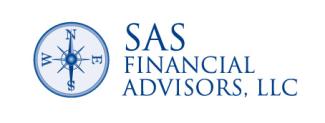
P/E Ratio Benchmarks and the Upcoming Federal Reserve Meeting
The Euro and the US dollar are no longer exactly at parity, however, if you have contemplated buying property in the European Union, now is the time to consider it. The heat wave and fires could be a problem though, kind of like California. So far, in SF, we have been lucky with clean air this year, however, that can change anytime.
The Market
In July, for the first time this year, markets have gains so far. Still 10 days left to change but the S&P 500 has risen out of the 20% decline defining a bear market. Still too early to determine if this is a bear market rally or if we’ve reached a bottom. Markets generally appreciate beyond historical fair value and decline to lower than fair value. The start of 2022 landed us considerably above historical fair value and we remain above historical fair value currently based on benchmarks like the price/earnings ratio of 15x past 12 months earnings. As of today, the price/earnings ratio for the past 12 months is 20x earnings. Fair value of 15x earnings would mean the S&P500 value would be closer to 3000 vs current value of just below 4000. Fair value based on history last occurred in 2009, and in the time since we have seen an overall market appreciation of 300%. The most effective approach is to stick to your financial plan and asset allocation as this too shall pass as it has for 100 years.
The yield curve has maintained its negative spread between the 2 year US Treasury currently yielding 3.25% and the 10 year US Treasury at 3.04%. In normal market settings, going further out on the Treasury term should reward you with a higher yield. In the inverted reality we are seeing now, investors are rewarded higher on a shorter spread, which generally signals volatility.
When weighing economic data there are an equal number of positive and negative backward and forward looking indicators. Employment continues to look strong as do earnings releases so far from S&P500 companies. Inflation continues to be high but consumer spending continues to be strong. Although Covid positive tests have been surging, hospitalization remains under control. Next week 2nd quarter GDP should be released and we could be looking at negative growth. That would be the 2nd quarter in a row of negative GDP growth. Next week is the July Federal Reserve meeting with expectations of a 0.75% rate increase. Is all this news already discounted in share prices? The Nasdaq average is still down more than the 20% market decline indicating a bear market. The Dow Jones 30 did not reach the 20% decline marker for a bear market. Housing prices set a record while inventory builds and mortgage rates have increased steeply. Mortgage applications have plummeted. Will house prices reflect this lower demand? So many questions and only time will tell the answers. Again, stick to the plan and maintain asset allocations.
Current Events
Climate change is in our face. The damage is both economic and deadly. Our leader seems to be watching as Rome burns! Paralysis in the political arena is preventing governments from taking action as various crises continue to build. There is always hope and we need to believe that our leaders will join together. 25% of Americans, including 30% of millennials, say their next car will be electric. The reason: gas prices based on a AAA survey. The good news is autos are the number one cause of climate change. We are seriously looking at an electric car as our next vehicle but we only drive about 5000 miles per year. Are you thinking of buying electric? Of course, there are few new cars available because of supply chain problems!
This website is informational only and does not constitute investment advice or a solicitation. Investments and investment strategies recommended in this blog may not be suitable for all investors. SAS Financial Advisors, LLC and its members may hold positions in the securities mentioned within this newsletter.
The SAS Newsletters are posted on the SAS Blog weekly: https://www.sasadvisors.com/blog

